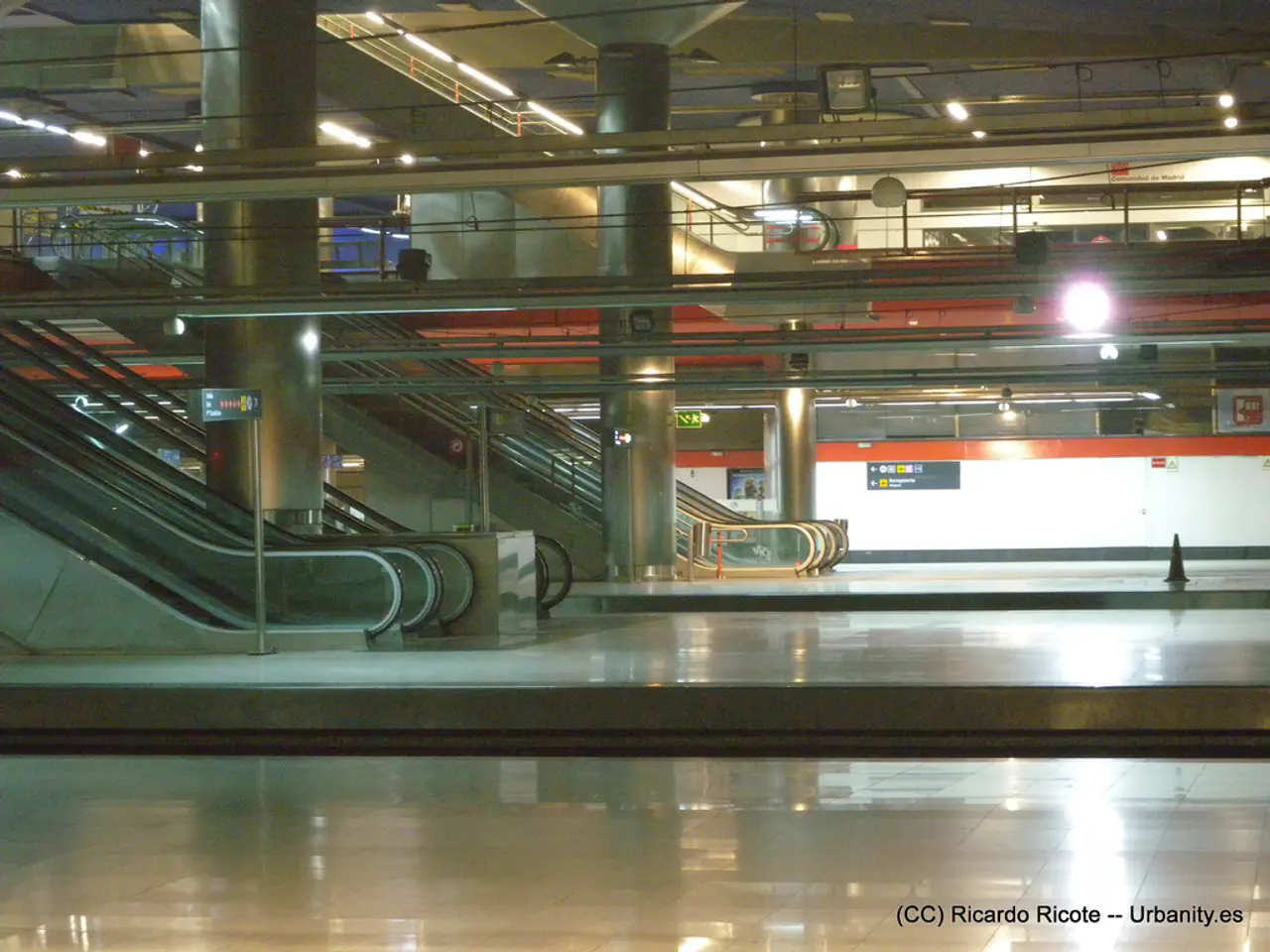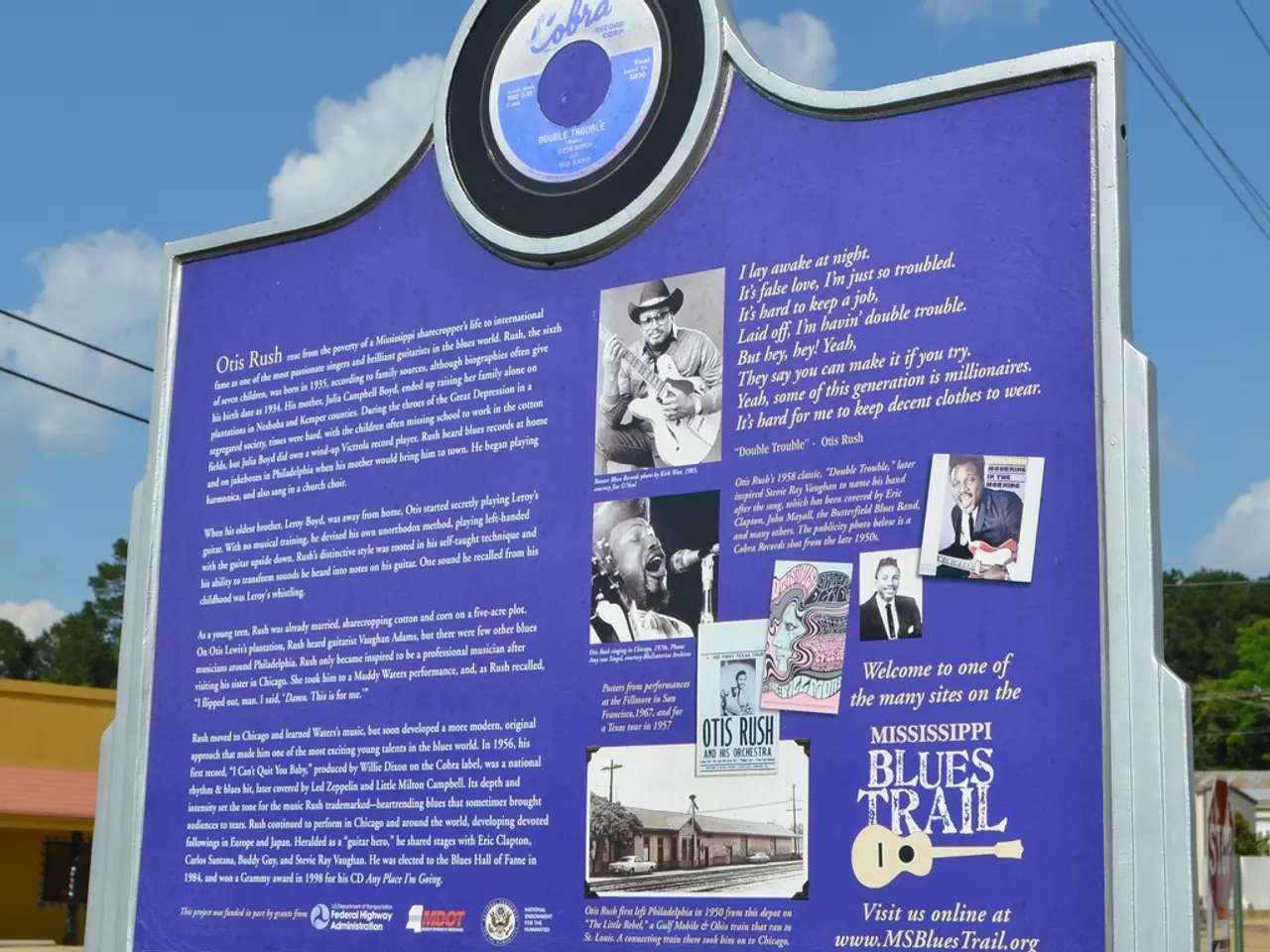Century-long journey of escalators: momentary joy in 30 seconds for riders
The escalator, a moving staircase designed to transport people between different floors or levels, has been a game-changer since its invention in the late 19th century. This ingenious device, which revolutionized urban and consumer spaces, can trace its roots back to the precursor concept that emerged in the United States in 1891.
Jesse W. Reno, an American inventor, is credited with creating the first practical design for an escalator. His invention, an inclined moving belt equipped with cleats to carry passengers at a 25° angle, featured a stationary handrail. This model was soon improved to include a moving handrail in the same year[1]. The term "escalator" was first used at the Paris Exposition of 1900, marking its public debut.
Modern escalators, typically inclined at about 30°, are electrically powered, and can carry thousands of passengers per hour, facilitating efficient mass transportation within buildings and urban transit hubs[1]. The transition phase of an escalator ride, lasting 20-30 seconds, has been identified as a moment of passive dreaming in the hectic everyday life.
The escalator's development coincided with rapid urbanization and the growth of large commercial spaces like department stores, subway systems, and airports. It transformed the experience of moving vertically inside buildings, replacing tiring climbs with effortless transportation, and effectively democratizing access to upper levels of buildings.
In consumer society, escalators became symbolic of modern convenience and technological progress—offering effortless movement that aligned with the 20th century ethos of efficiency and mass consumption. The escalator played a key role in shaping the spatial dynamics of urban centers, shopping malls, and transit stations by influencing foot traffic flow and the design of multi-level spaces, thus supporting the rise of consumer culture and urban mobility[1].
The first escalator in Germany was opened at the Tietz department store in Cologne on July 11, 1925. In Medellín, Colombia, several almost 400-meter-long escalators were installed in 2011, helping make steep neighborhoods more accessible and controlling crime. The escalator's special significance in Medellín is evident, as it helps overcome the city's challenging topography and contributes to social development.
In addition to its practical applications, the escalator has also found its way into popular culture. For instance, the singer-songwriter Reinhard Mey, born in 1942, describes memorable childhood experiences involving escalators in one of his songs. The escalator is also remembered for its appearance in the James Bond movie "Skyfall," where it was used as a slide.
In post-war West Germany, escalators became a symbol of the economic miracle, representing progress and modernity. Today, there are around 39,000 escalators in Germany, with the official term being "moving staircases." Frank Steinbeck, from the Technikmuseum, finds the installation of escalators in Comuna 13 in Medellín a great thing, highlighting their positive impact on urban life and mobility.
In conclusion, the escalator's invention in the late 19th century and its subsequent integration into public and commercial spaces throughout the 20th century made it a crucial technological innovation that reshaped urban life, transportation, and consumer interaction with the built environment[1]. Its influence continues to be felt today, as it continues to serve as a symbol of modernity, urban life, and the emerging consumer society.
[1] "The History and Impact of the Escalator" by Christina C. D. Gish, The Conversation, 2017.
- The escalator's integration into various industries, such as finance, transportation, technology, and commerce, played a significant role in shaping the urban landscape and mass consumer culture during the 20th century.
- Today, the escalator continues to be a key feature in urban centers, airports, department stores, and subway systems – showcasing the symbiotic relationship between the industry, finance, transportation, and technology sectors, and the growth of consumer society.




